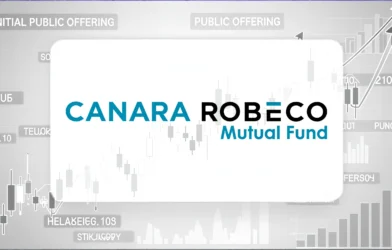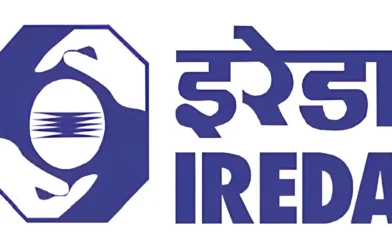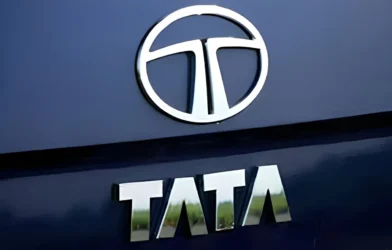Author: Aarya Shah | EQMint | Market News
The Tata Group — one of India’s most respected and diversified business conglomerates — is facing a storm in the stock market. Once the darling of long-term investors, several Tata companies have seen their shares plummet sharply in 2025, wiping out billions in market value and shaking investor confidence across sectors.
In total, Tata Group’s listed entities have lost an estimated ₹4.56 lakh crore in market capitalization from their respective peaks. The tech major Tata Consultancy Services (TCS) alone accounts for around 85% of this wealth erosion, underscoring how deeply the decline has hit even the most dependable parts of the group’s portfolio.
While market corrections are not unusual, the scale and spread of this slide have caught many by surprise. Several Tata stocks — once considered steady compounders — have fallen between 30% and 60% from their highs, exposing weaknesses in both sentiment and sectoral fundamentals.
The Biggest Losers
Here’s a look at the Tata Group companies that have seen the steepest declines from their 52-week highs:
- Tejas Networks: Down about 59% from ₹1,460 to ₹600.
- Trent: Down around 44% from ₹8,346 to ₹4,690.
- Nelco: Lost 42%, dropping from ₹1,500 to ₹875.
- Oriental Hotels: Down 36%, from ₹202 to ₹129.
- Tata Teleservices (Maharashtra): Fell 35%, from ₹89 to ₹58.
- Tata Technologies: Down 34%, from ₹1,088 to ₹714.
- TRF: Lost 34%, from ₹528 to ₹349.
- TCS: Down 33%, from ₹4,494 to ₹3,028.
- Tata Elxsi: Dropped 32%, from ₹7,980 to ₹5,407.
- Automotive Stampings & Assemblies: Down 31%, from ₹815 to ₹562.
While Tejas Networks leads the fall with nearly 60% erosion, the inclusion of TCS and Tata Elxsi — both blue-chip heavyweights — signals that the pain runs deep across the group’s portfolio.
What’s Behind the Crash
Several factors have converged to drive this decline — both company-specific and macroeconomic.
1. Weak earnings visibility:
Sectors like technology, telecom, and engineering have been facing slower growth, rising costs, and weaker global demand. Even TCS and Tata Elxsi, long seen as steady performers, are under pressure due to cautious client spending and reduced IT budgets.
2. Rising interest rates:
Higher borrowing costs have dampened corporate profitability and investor appetite for capital-intensive businesses. Companies with ongoing expansion or heavy capex — such as Tata Power, Tata Steel, and Tata Motors — are being re-rated by investors who prefer cash-rich firms in tighter liquidity cycles.
3. Sectoral headwinds:
Hospitality, telecom, and manufacturing units have faced demand fluctuations, input cost inflation, and regulatory challenges. Oriental Hotels and Tata Teleservices have particularly struggled with inconsistent earnings recovery.
4. Market rotation:
As investors shift from expensive or high-beta stocks to safer bets, several Tata stocks — particularly those that rallied strongly in 2023 and early 2024 — are seeing aggressive profit booking.
5. Overvaluation concerns:
Some group companies had surged well beyond their fair valuations during the bull market, pricing in years of growth ahead. With reality catching up, valuations are being corrected sharply.
TCS: The Giant Under Pressure
Tata Consultancy Services, the group’s crown jewel, has seen its stock fall over 30% from its highs, contributing the bulk of the group’s market-cap erosion. A combination of subdued global IT spending, margin pressure, and muted deal flow has kept investors wary.
However, analysts still see TCS as a long-term compounder with strong fundamentals. The current valuation correction could be an opportunity for investors with a long-term horizon, provided global tech demand stabilizes in coming quarters.
The Silver Lining
Despite the ongoing slump, Tata Group’s fundamentals remain strong. Many of its businesses operate in high-growth, strategic sectors — such as electric mobility, renewable energy, defence, and digital infrastructure.
Companies like Tata Power, Tata Motors, and Tata Advanced Systems are well-positioned to benefit from India’s push toward green energy, infrastructure, and technology self-reliance.
In fact, some analysts argue that this correction could be healthy, setting a more reasonable base for future gains. Long-term investors are advised to stay selective — focusing on companies with clear earnings visibility, strong balance sheets, and sectoral tailwinds.
What Investors Should Do
- Reassess exposure: Review how much of your portfolio is concentrated in Tata stocks or funds heavily invested in them.
- Avoid panic selling: Sharp corrections often create opportunities, but averaging should be done only in fundamentally strong names.
- Focus on quality: Stick with proven businesses like TCS, Tata Motors, and Titan, which have resilient balance sheets and diversified revenue streams.
- Diversify: No matter how strong the brand, overexposure to a single corporate group increases risk during downturns.
Outlook
The current decline across Tata counters may continue until broader market sentiment improves or corporate earnings show a decisive rebound. The group’s diversified structure offers stability over the long term, but short-term investors may need to brace for more volatility.
In many ways, this correction serves as a reminder that even India’s most trusted conglomerate isn’t immune to market cycles. While the Tata name stands for integrity and long-term value creation, market forces can still deliver painful lessons — and perhaps, new opportunities — for those who stay invested through the storm.
Disclaimer: This article is based on information available from public sources. It has not been reported by EQMint journalists. EQMint has compiled and presented the content for informational purposes only and does not guarantee its accuracy or completeness. Readers are advised to verify details independently before relying on them.









